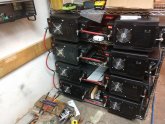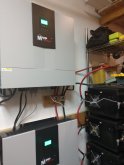Take a look below. I believe this is correct to get the desired results of a 12v 300Ah LiFePO4 battery pack.

And, in the drawing, that can all be done using bus bars, right?
Thanks
(Install space necessitates the batteries to be configured like this, all in a single row, thus the odd layout)
{Deleted second pic to avoid too many comments on a diagram I know is wrong }
}
And, in the drawing, that can all be done using bus bars, right?
Thanks
(Install space necessitates the batteries to be configured like this, all in a single row, thus the odd layout)
{Deleted second pic to avoid too many comments on a diagram I know is wrong
Attachments
Last edited:





